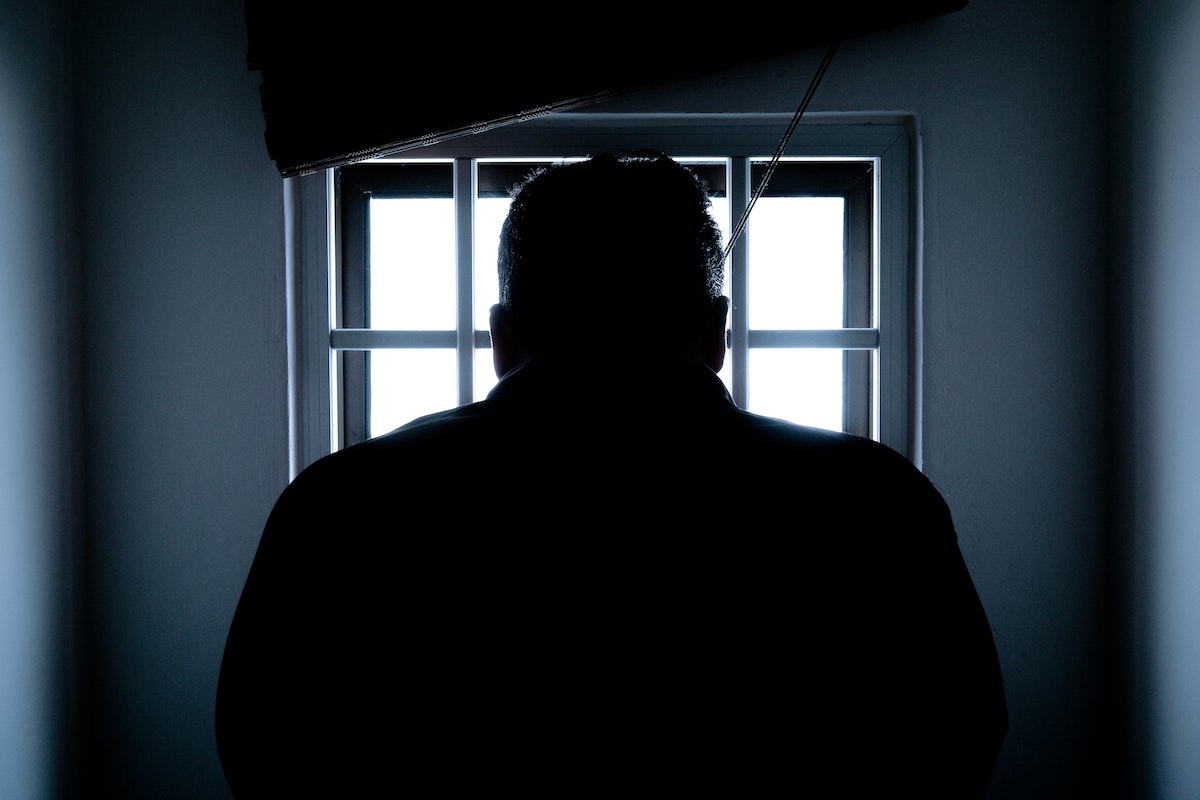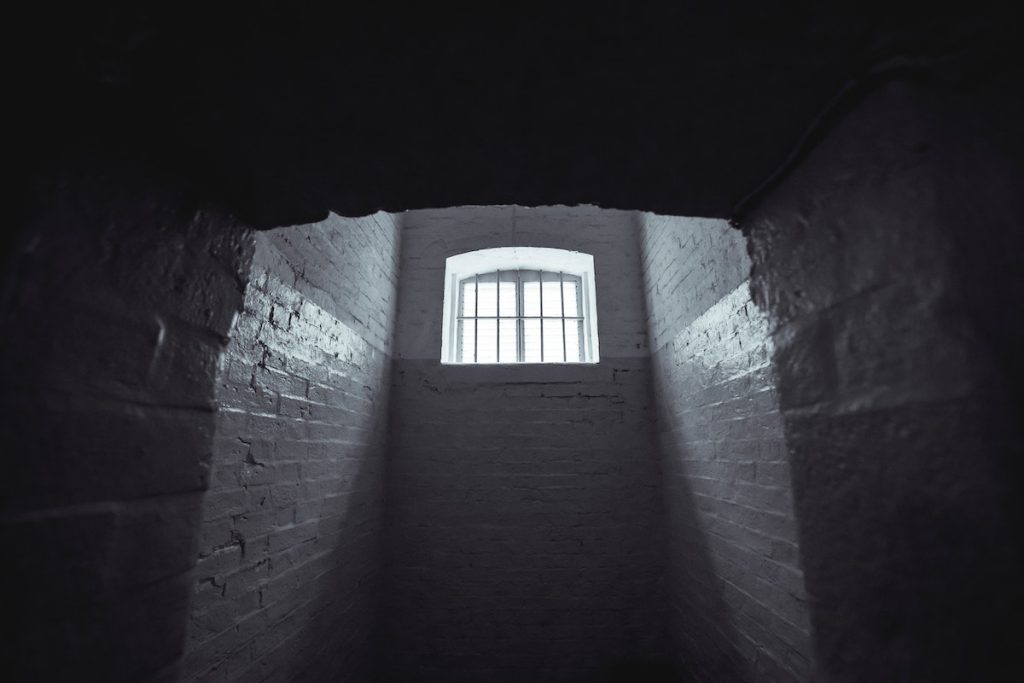- A jail is a facility for persons with minor offenses, while prisons hold persons with felony charges.
- Prisons are better funded and much larger than jails.
- Jails are run by local government officials, while prisons are run by state or federal government.
- Statistics show that jails hold much fewer inmates than prisoners.
Many people use prison and jail synonymously, but they refer to different kinds of incarceration. There are numerous factors that separate them, but what’s the main difference between a jail and a prison?
From the length of stay to the type of facility and population, prison and jail have many opposites. An offense can lead to jail, but it won’t necessarily land you in prison.
Continue reading to learn more about their difference.
What Is Jail?
Jail is where the police bring people arrested on the spot. Sometimes the “jail visit” can be short, usually given for minor misdemeanors, like drinking in public. In other cases, people can get interrogated in jail. This interrogation determines whether their stay will be short or they will await trial.
Definition of Jail
Jail is usually referred to as “a place of confinement for individuals held in lawful custody.” In fact, it is where people or inmates await trial or are convicted of a minor crime.
From this, you can see that a jail can hold arrested persons temporarily. Aside from this difference between a jail and a prison, another one is that jailers usually guard a jail.
This multi-purpose institution performs police work like deterrence, social isolation, confinement, repentance, punishment, etc. Finally, the difference between prison and jail can also be seen in both places’ populations.
Types of Offenses That Lead to Jail Time
Many crimes can lead to jail, but they won’t necessarily earn you a long stay in prison. In general, crimes are usually divided into two types:
- Felonies
- Misdemeanors
Misdemeanors are lesser offenses. Some include:
- Gun possession,
- Driving under the influence (DUI),
- Driving while intoxicated (DWI),
- Drug possession of marijuana,
- Drug possession of prescription pills not prescribed to you.
Felonies are much more serious crimes that often lead to incarceration. If you are an inmate, you can protect your beneficiaries by hiring a good lawyer.
Characteristics of a Jail Facility
Jails are correctional facilities where inmates await trial. Because they don’t stay there long, a jail is characterized as small compared to a prison.
Length of Stay in Jail
One difference between a jail and a prison is that a jail keeps the inmates temporarily, usually for less than a year. You can stay in jail until the trial commences if you are convicted.
Inmate Population in Jail
According to the Bureau of Justice Statistics, in 2021, the number of persons in jail increased by 16% from the previous years. In June 2021 alone, more than 636,000 persons were taken to local jails.

What Is Prison?
So what is the difference between a prison and a jail? Unlike a jail, a prison is a facility that keeps long-term prisoners. This is why prisons are called punitive and corrective facilities operated by the government.
Every prison serves three primary purposes:
- Coercive,
- Custodial,
- Correctional.
Definition of Prison
Prison is defined as “a place of confinement specifically for lawbreakers”. Simply put, it is an institution for inmates convicted of serious crimes. Prisons are led under state jurisdiction, and inmates undergo rehabilitation and reformation programs.
Types of Offenses That Lead to Prison Time
Prison time is usually given if the convict has committed a serious crime. These types of crimes include violent crimes, drug possession, sexual offenses, and white-collar crimes.
An inmate charged with a violent crime committed acts such as domestic violence, assault, rape, kidnapping, murder, or manslaughter. The inmates convicted of these crimes carry severe penalties, with some getting life in prison while other states practice the death penalty.

Drug possession charges can vary depending on the situation, the number of drugs found, if they were sold for personal consumption, whether they were class A or B drugs, etc.
Sexual offense charges are usually the most long-lasting because of the subject’s sensitivity. The same results in some inmates asking for a personal injury lawyer and additional security even inside the prison.
White-collar crimes get sentences almost as long as those convicted of manslaughter. These charges include accounting fraud, tax evasion, embezzlement, and insider trading.
Prisoners can protect themselves through criminal defenses with the right attorney.
Characteristics of a Prison Facility
Unlike a jail that’s meant to keep a few inmates, prisons are comparatively large.
A prison holds people convicted of harsh offenses, so the place is adapted to be livable. That means there are also health services, heavy security, and shared facilities like an outdoor gym, etc.
Length of Stay in Prison
A prisoner can remain in prison for some years, depending on the sentence. Usually, people that go to prison have a longer sentence than a year. Major crimes can land you in prison for life or on “death row”.
Evaluations in 2018 determined that the average stay of state prisoners is 2.7 years.
Inmate Population in Prison
An evaluation in 2021 determined that the prison population is equal to 1,204,300 inmates, a 1% decrease from 2020. According to the Federal Bureau of Prisons, there are more than 158,000 federal inmates.

Difference Between Jail and Prison
Although they may seem the same and are often used interchangeably by some, there is a difference between jail and prison USA. The first main difference between jail and prison is that jails are usually local. This means that jails are run by local law enforcement or government agencies, while prisons are operated by the state or federal government.
Another difference between the county jail and state prison is the length of stay. Jails house inmates who are there for a short time, while prisoners stay longer. This is why jails have less-developed programs and facilities, while prisons are better funded to accommodate more criminals for longer periods.
Remember that jails usually take inmates charged with misdemeanors while prisons hold inmates with felony sentences.
Example: If you committed a sexual assault and your court sentence is over a year, you will go to prison. Committing minor misdemeanors like indecent exposure, drinking in public, shoplifting, etc., will land you a night in jail.
Conclusion
Many confuse the terms, but going to jail, and prison are different. Jail is a less harsh punishment than prison, but it can sometimes be a bridge between you and a more secure correctional facility.
It’s very important to know the difference between jail and prison. A good attorney can always support you by building risk mitigation strategies for business.
FAQs
What is the difference between jail and prison?
One difference between jails and prisons is the size of the facility. Jails are usually smaller for fewer inmates compared to prisons that hold many felons. Moreover, prison is where people with felony charges end up, while jail is a temporary stay for those that have committed minor misdemeanors.
Prisons are better funded and have a larger capacity and programs than jails. Plus, local government officials usually run jails while state or federal governments operate prisons.


